How to make a filter for the well itself
To clean the water taken from the well from solid impurities, special filters are used that can be made independently. But before you make a filter for a well, you must be familiar with the following requirements for this device:
- good bandwidth;
- resistance to corrosive effects;
- affordable cost.
In addition, in accordance with the filtering method used, these devices are divided into slotted, perforated and gravel.
Further, each of these types will be considered in more detail, including recommendations for their manufacture.
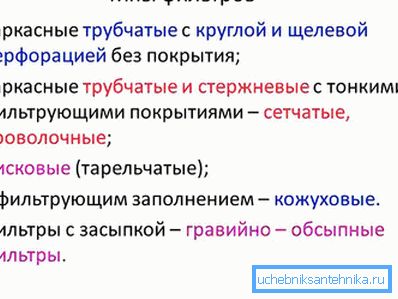
PVC slotted filter
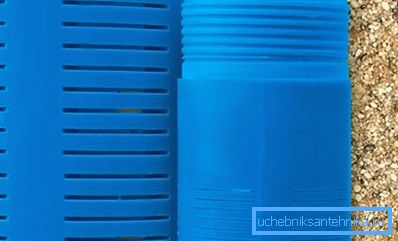
Filters of this type are made in the form of a piece of plastic casing with a longitudinal slit perforation. Note that in addition to its main purpose (the retention of large particles of soil), such devices contribute to the hardening of the walls of the well.
Before you make a filter, you will need to measure the length of the sump, corresponding to the depth of the well, which is about 1–1.5 m. In addition, you will need to prepare:
- a piece of plastic pipe;
- brass mesh (or stainless steel);
- grinder (hacksaw);
- marking tool (chalk or pencil).
Works begin with marking and cutting of longitudinal slits, which are located either one above the other, or in a checkerboard pattern. The choice of the width of such a gap depends on the quality of the soil at the place of installation of the filter (fine-grained or coarse-grained), and its length can be from 2.5 to 7.5 cm. In order to preserve the ring stiffness of the pipe, it is necessary to leave solid sections on it (without perforation), which further can be used for installation of the reinforcing belt.
After preparing the gaps, the pipe is wrapped along the entire length with stainless steel steel wire (3 mm thick), the turns of which are arranged in a spiral in 20 cm increments. In addition, the resulting winding is soldered pointwise every 40–50 cm. A filtering mesh of the appropriate size is placed on top, which is fixed on the pipe with the help of the same wire, which is wound with a step of 5–10 cm.
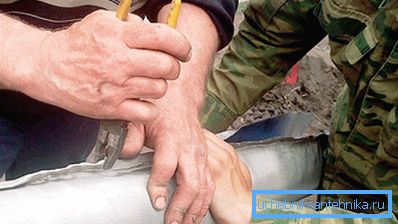
As a filtering element, a roll grid with a pre-selected cell size (square or galun weaving) is used.
Experts insist that brass nets of braun weaving with high permeability and strength are best suited for downhole systems.
Perforated filters
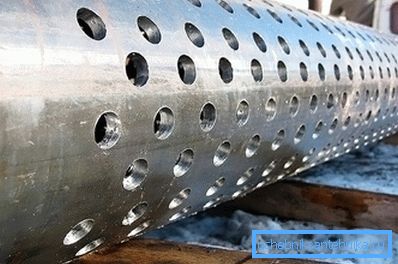
The main advantages of this class of structures are their low cost, ease of manufacture and reliability. For the manufacture of perforated filter element, the following materials and tools are needed:
- pipe section of the required diameter;
- drill with a set of drills;
- metal mesh of the desired size;
- marking tool.
Work begins with the marking of the part of the pipe to which the perforation is supposed to be applied (this is about a fourth of it, located directly in the aquifer).
The markings start from the pipe section, retreating from its edge by 10 cm, while the distance between the holes, arranged in a checkerboard pattern, is 1–2 cm.
In order to protect the perforation from clogging of the pipe in the working area, it is wrapped with a special filtering mesh, mounted in the same way as in the case of a slotted filter.
Gravel Filters
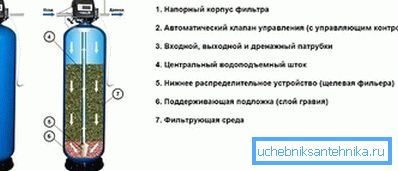
This method of groundwater filtration is the simplest in execution and involves the construction of a special barrier of small gravel, placed between the soil and the intake pipe. The preparation of the space for placing the gravel mix is made while drilling a well, when a small trapezoidal expansion is made in its bottom zone.
Gravel mix is selected for its filling. Remember how to choose it correctly: the particles of the mixture should be 5–10 times the average size of the rock granules. After appropriate selection, such a “calibrated” mixture is placed in the well and forms a filtration layer at least 5 cm thick. Make it more convenient by using a bag of geotextiles dipped in a niche on long ropes (they are simply cut off).

As a result of such simple operations, a filtering layer is formed at the bottom of the well shaft, trapping sand and silt particles. If you follow the above recommendations, you will be able to provide high quality filtration that is in no way inferior to industrial-made filters.
Video
This video shows how to make a perforated filter: